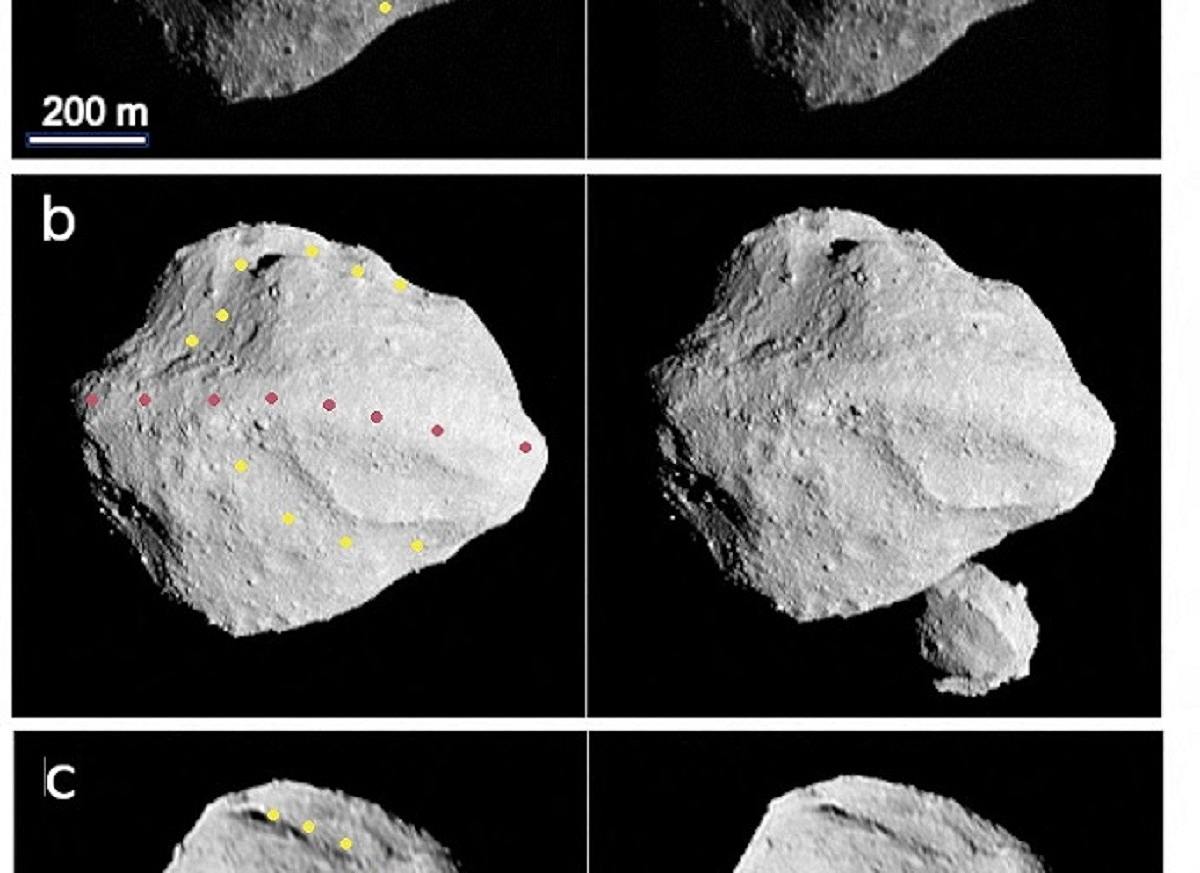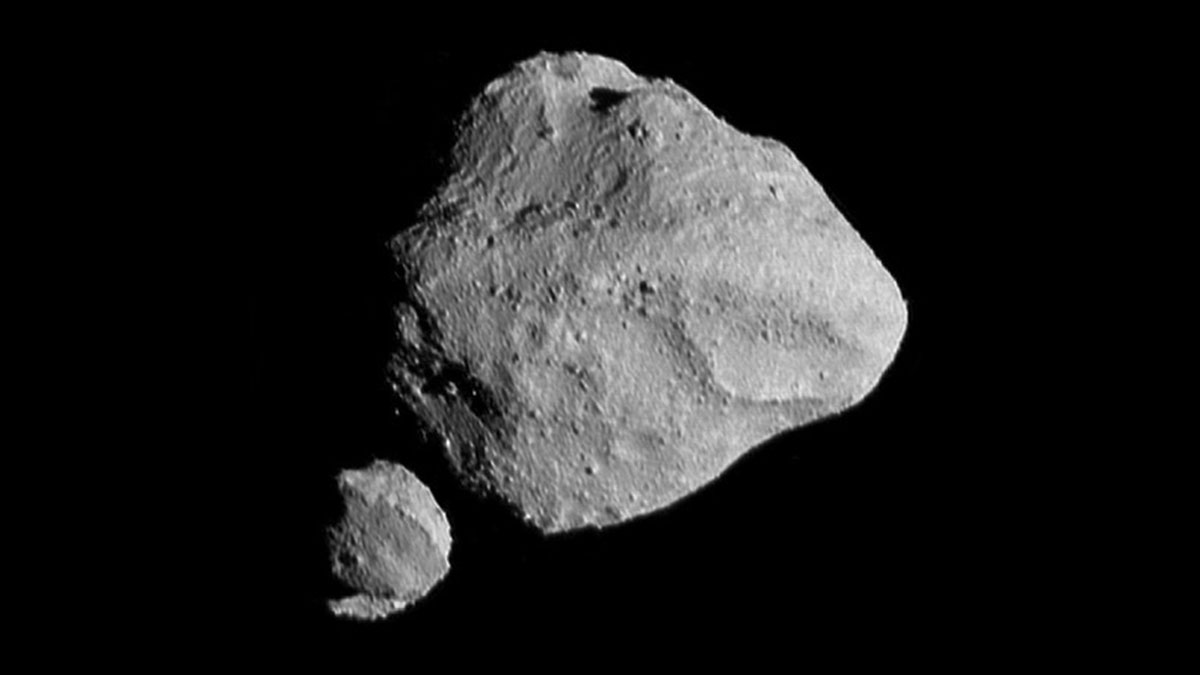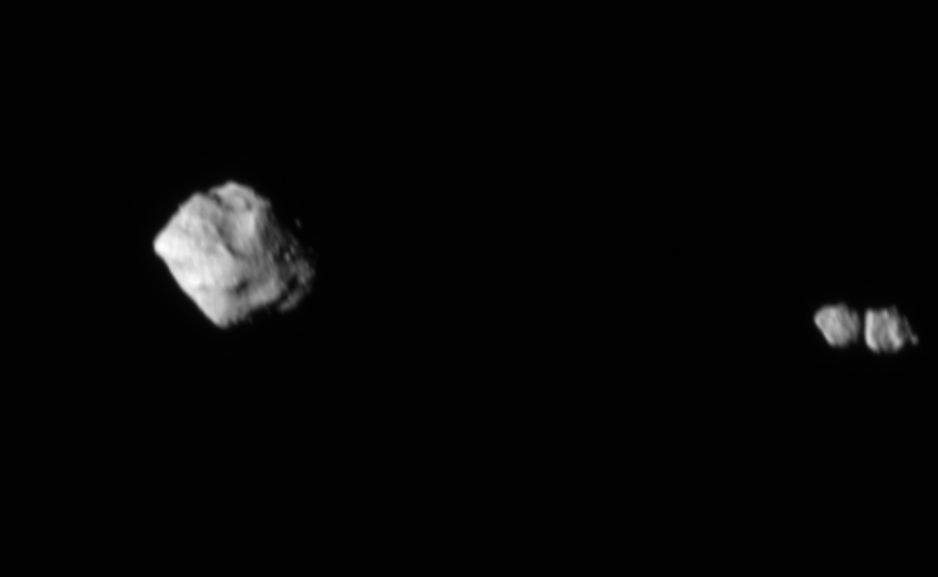





NASA's Lucy spacecraft, launched in 2021 to explore Trojan asteroids, has made an unexpected discovery during a flyby in November [0161e5b1]. The spacecraft revealed that the target named Dinkinesh is not a single asteroid but a cluster of three rocks. Additionally, Lucy discovered that Selam, Dinkinesh's natural satellite, is actually two objects fused together [0161e5b1][5513d84c][eaa9735a]. Further analysis has shown that Selam is a 'contact binary,' formed by the fusion of two moons [5513d84c][eaa9735a]. The cause of this fusion is still unknown, but researchers speculate that a collision with its larger pair could be the reason [5513d84c][eaa9735a]. Dinkinesh itself has a trough along its surface, indicating a violent fracture in its past. Researchers believe that the fast rotation of Dinkinesh caused a quarter of its structure to break off and reform as Selam [5513d84c][eaa9735a]. Scientists estimate Dinkinesh to be around 7 million years old and Selam approximately 2 million years old [0161e5b1][bd04a6fa][5513d84c][eaa9735a]. The encounter with Dinkinesh was initially meant as an engineering test for Lucy's tracking system, but the spacecraft provided clear images throughout the flyby, allowing for detailed observations [0161e5b1][eaa9735a].
The study of these asteroids provides valuable insights into the formation processes of cosmic objects and sheds light on phenomena such as the 'YORP effect' [0161e5b1][bd04a6fa]. It also aims to uncover insights into the solar system's formation and the origins of life on Earth [0161e5b1][bd04a6fa].
This discovery adds to our understanding of the universe and highlights the ongoing contributions of aerospace missions to space exploration [6c6358c4][bd04a6fa][5513d84c][eaa9735a].
Asteroid Dinkinesh and its moonlet Selam, located in the main asteroid belt, have a dynamic history. NASA's Lucy spacecraft observed ridges, trough structures, and other characteristics on Dinkinesh that suggest a complicated past [8d2ec1ca]. Dinkinesh has a diameter of 720 meters, while Selam is made up of two lobes, each about 230 and 210 meters wide. It appears that a piece of rock broke free from Dinkinesh in the past, creating a trough on its surface and forming debris that fell back onto the asteroid as boulders to form a ridge structure [8d2ec1ca]. Selam is a contact-binary moonlet, the first observed orbiting another asteroid. The complex shape of Selam suggests that small asteroids may shed material multiple times, contributing to the formation of satellites [8d2ec1ca]. Understanding the properties of small asteroids like Dinkinesh and Selam helps in understanding the earliest phases of planet formation [8d2ec1ca]. NASA's Lucy spacecraft, named after the Ethiopian fossil Lucy, will visit the asteroid Donaldjohanson in 2025 as part of its 12-year mission to study asteroids [8d2ec1ca].